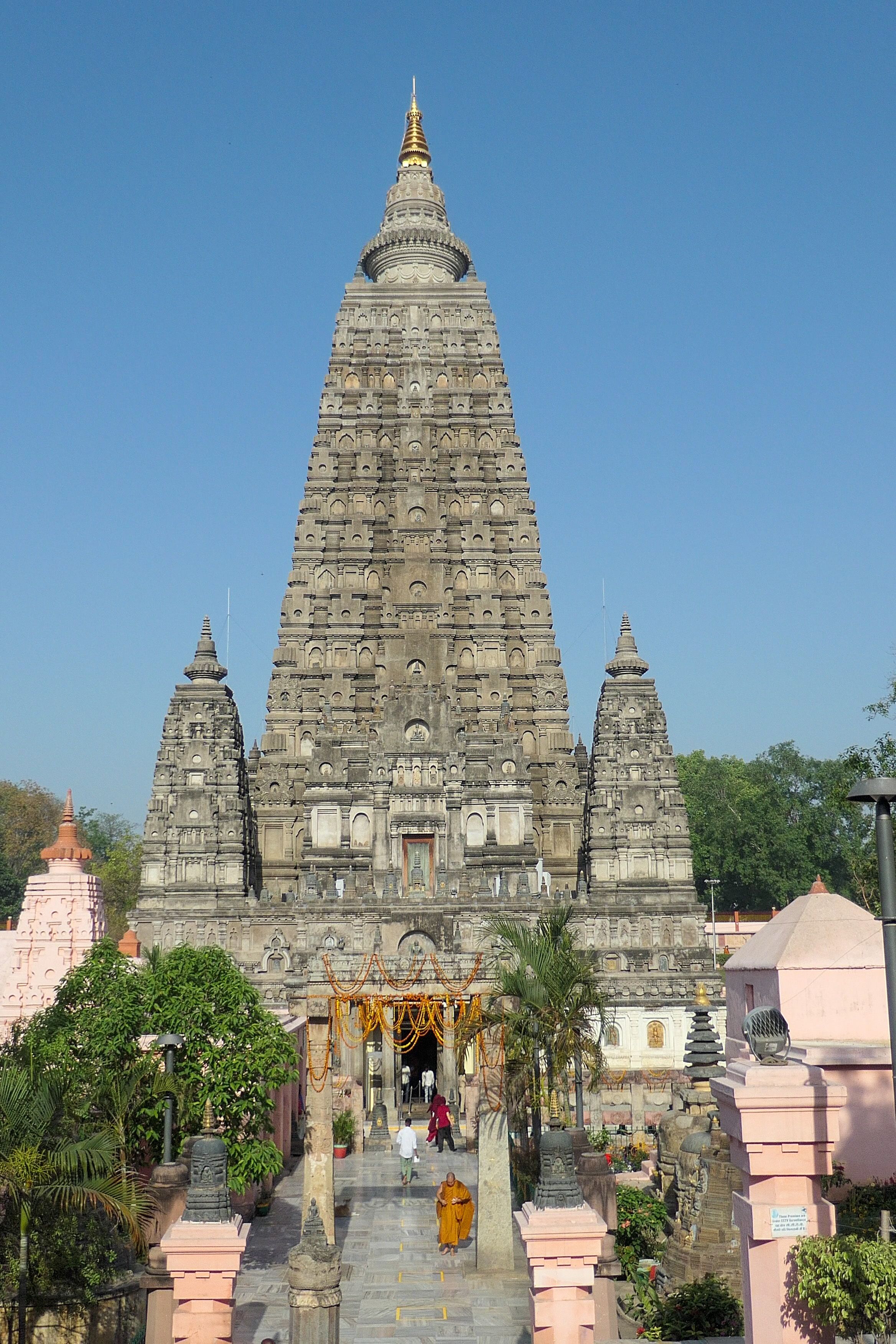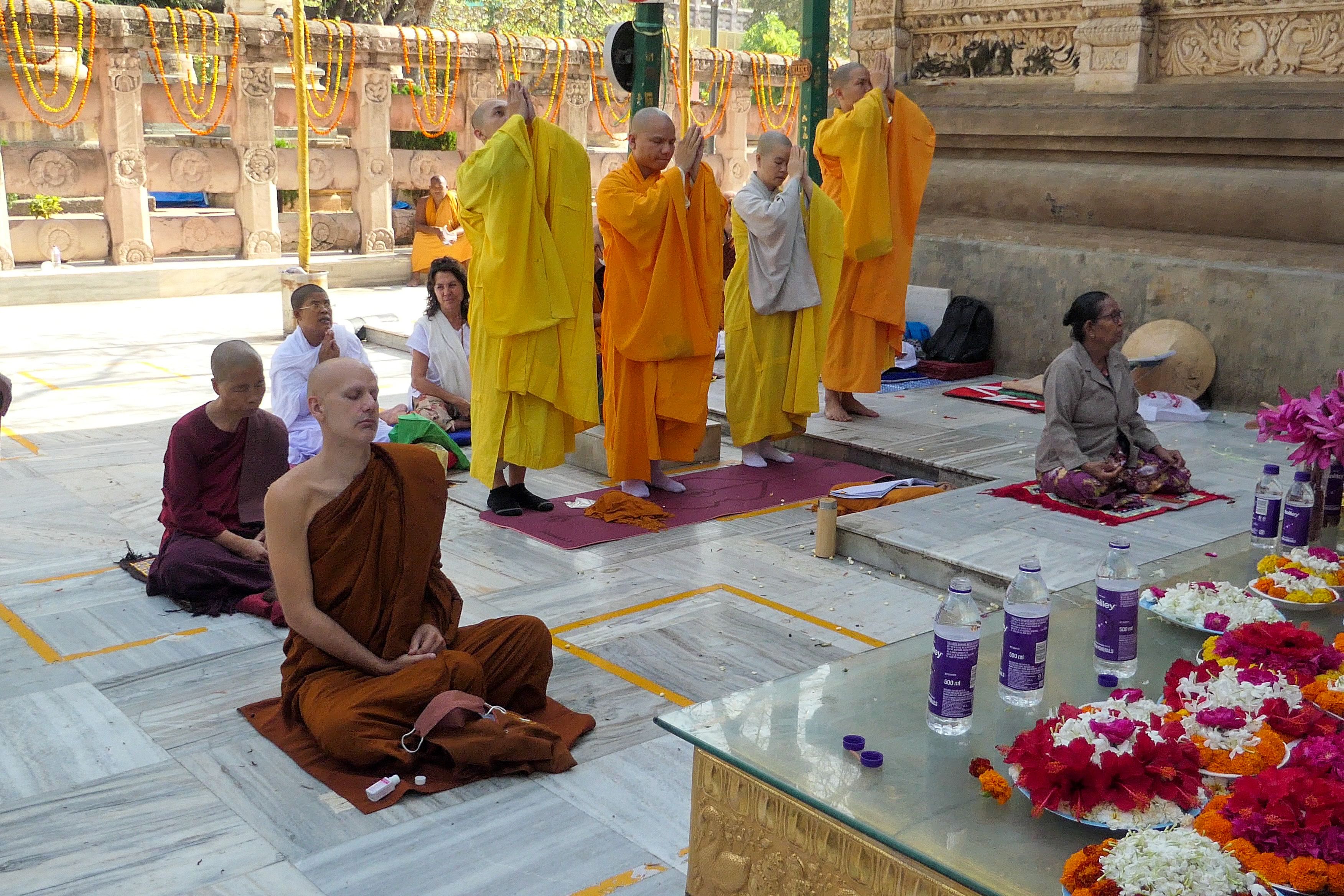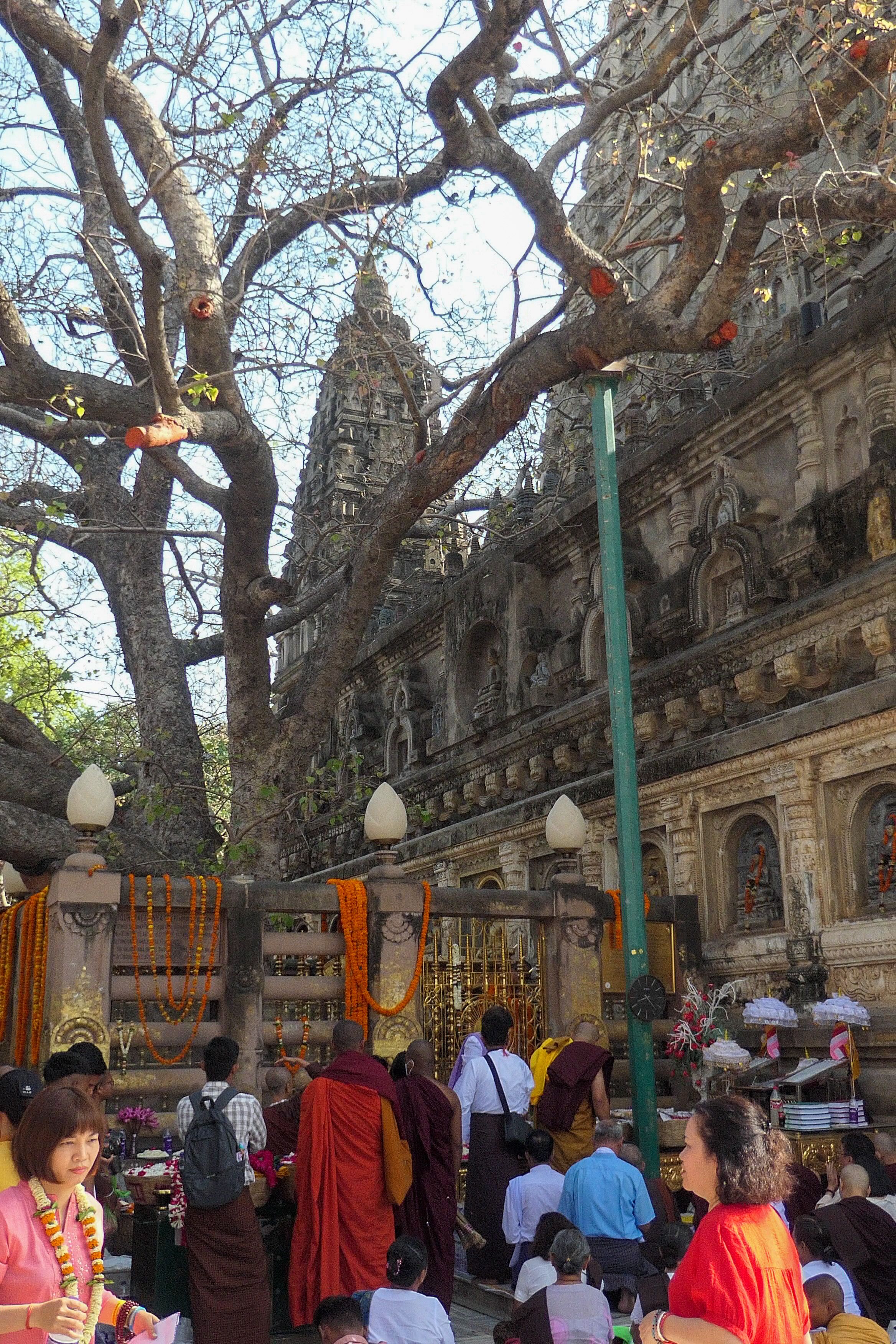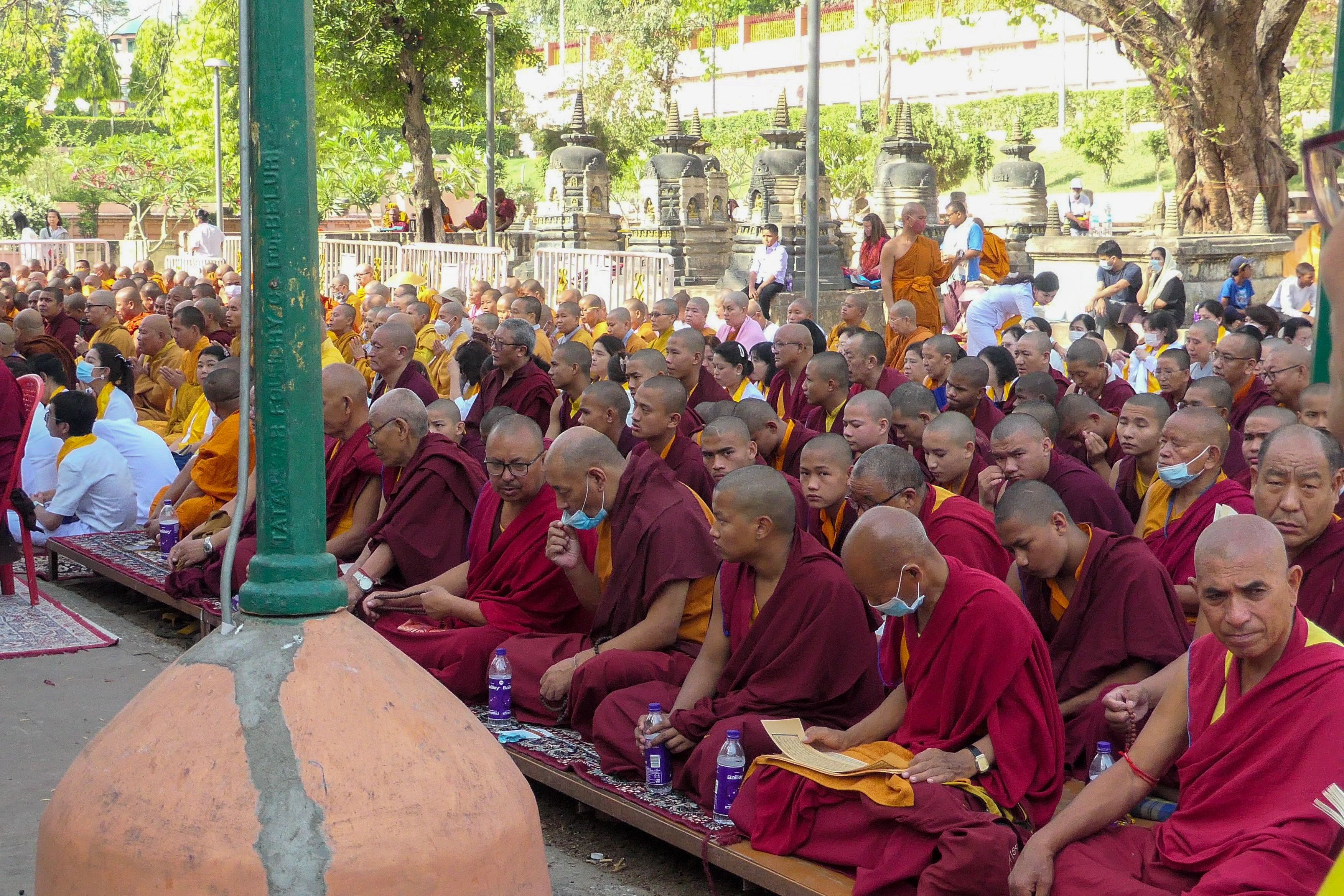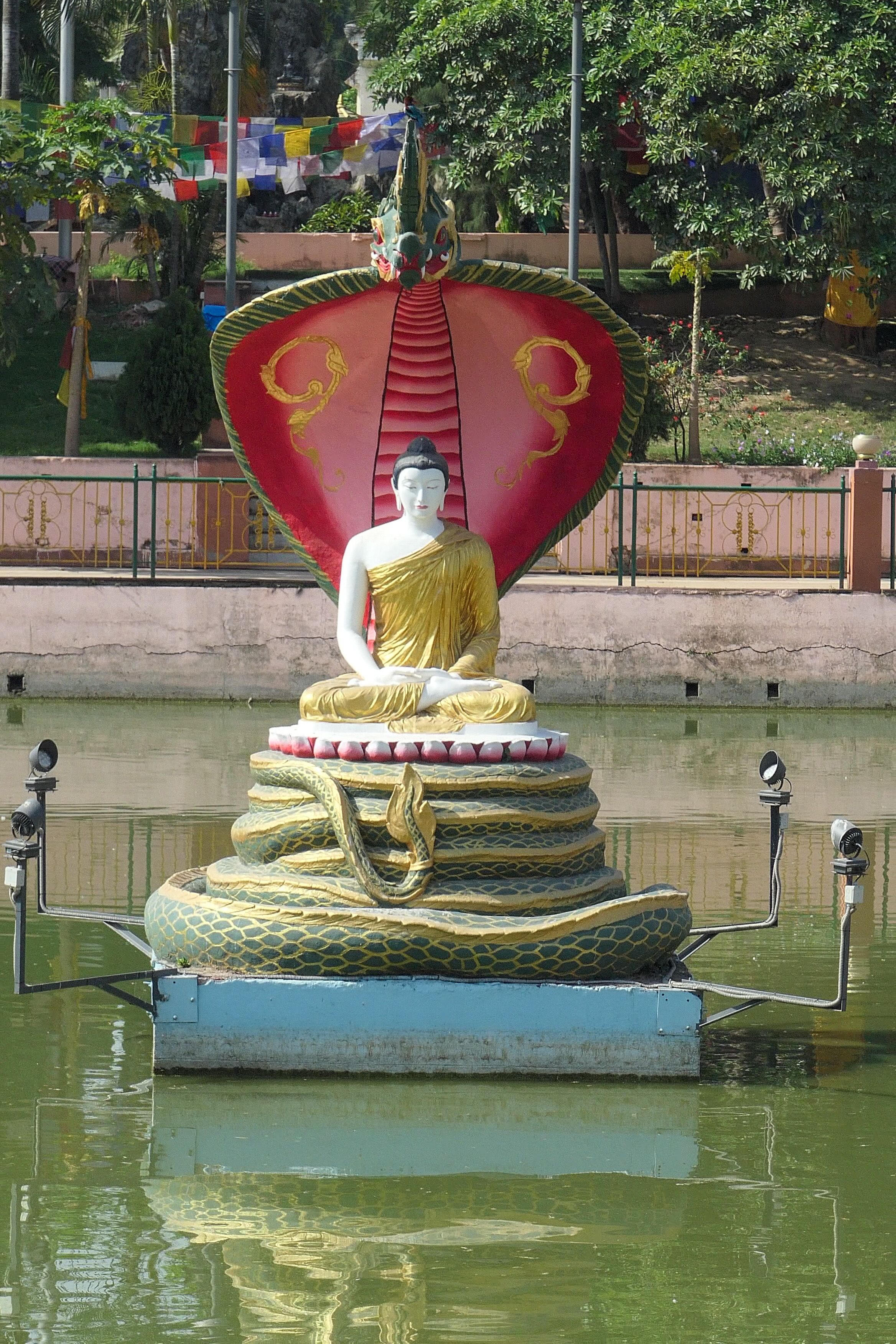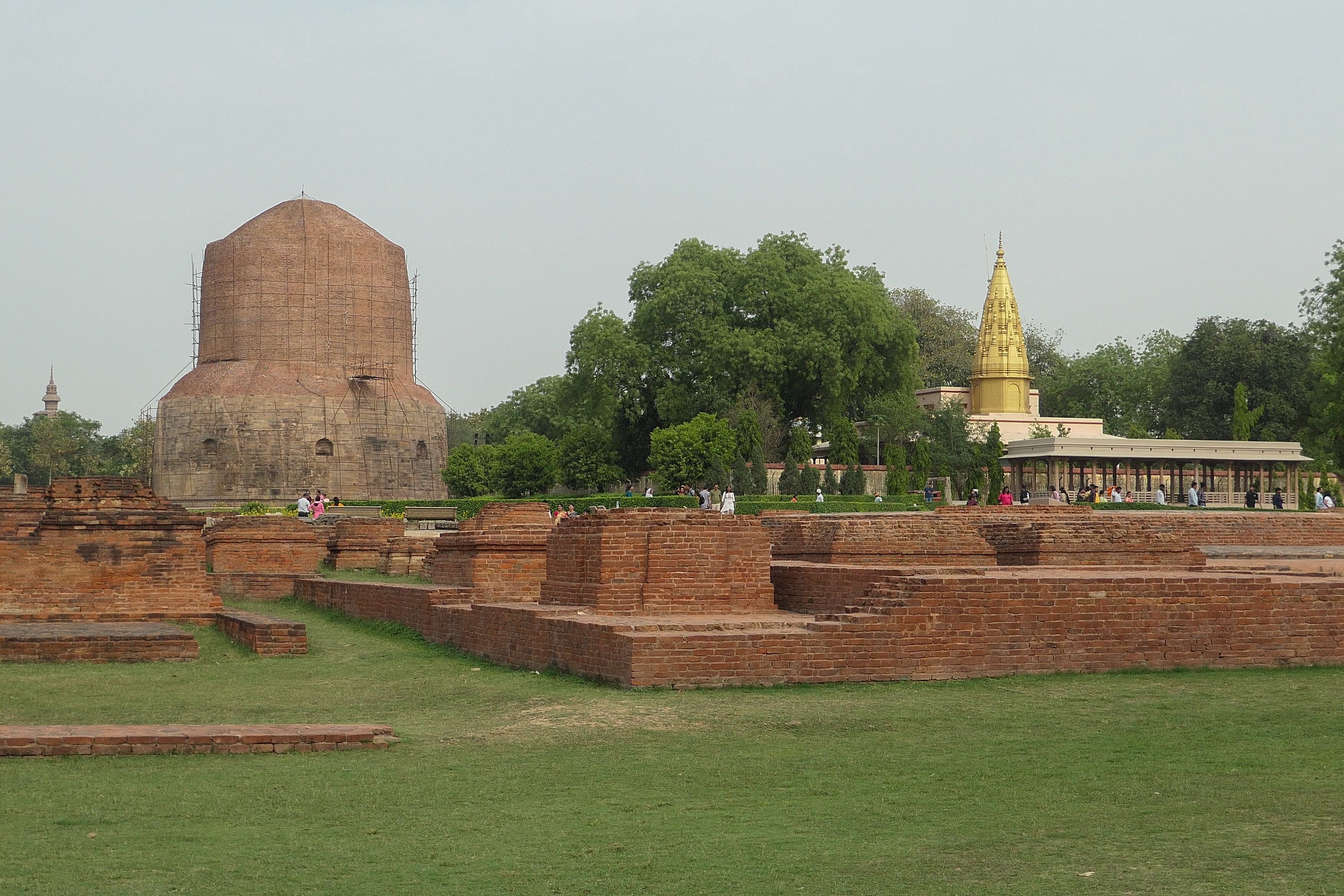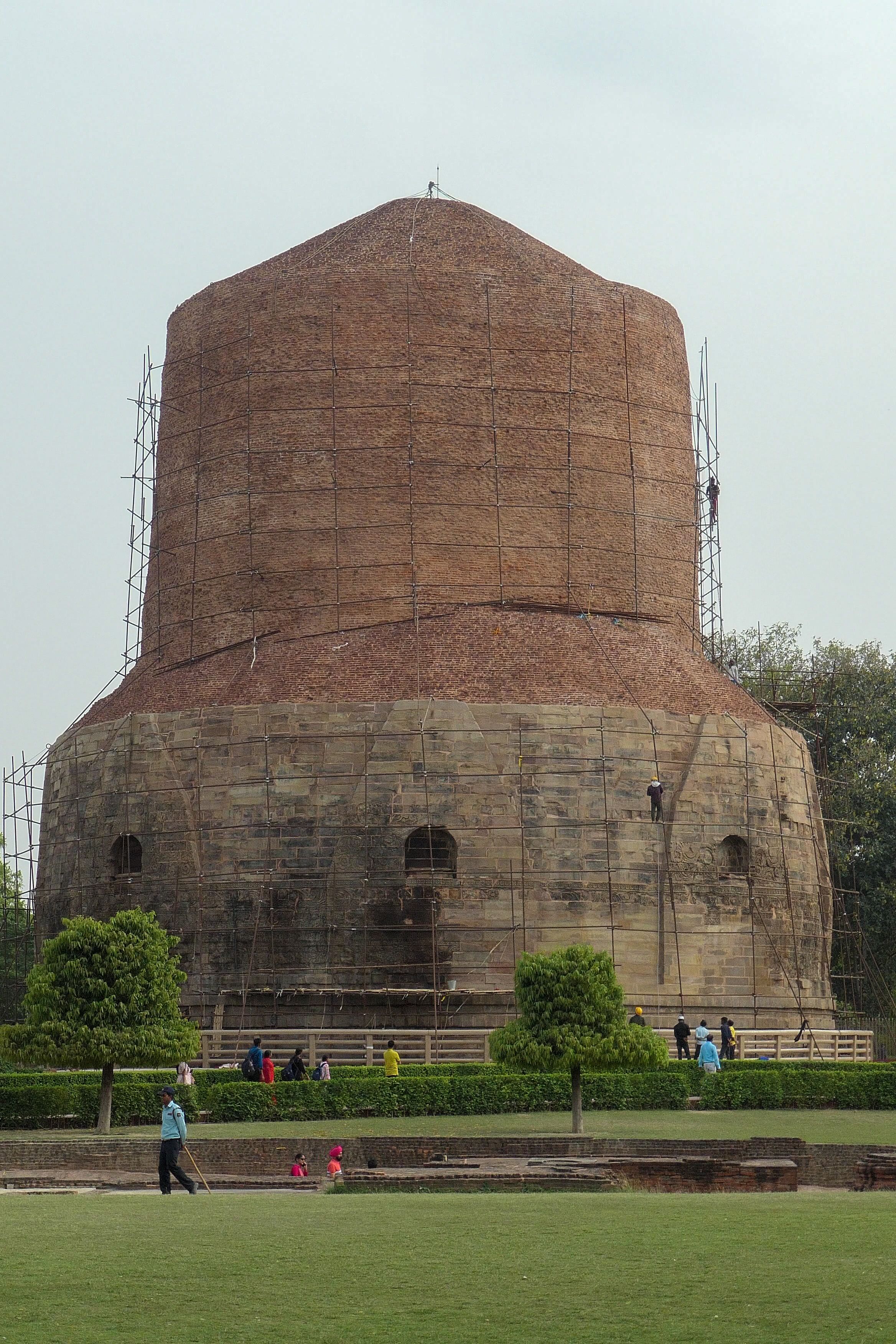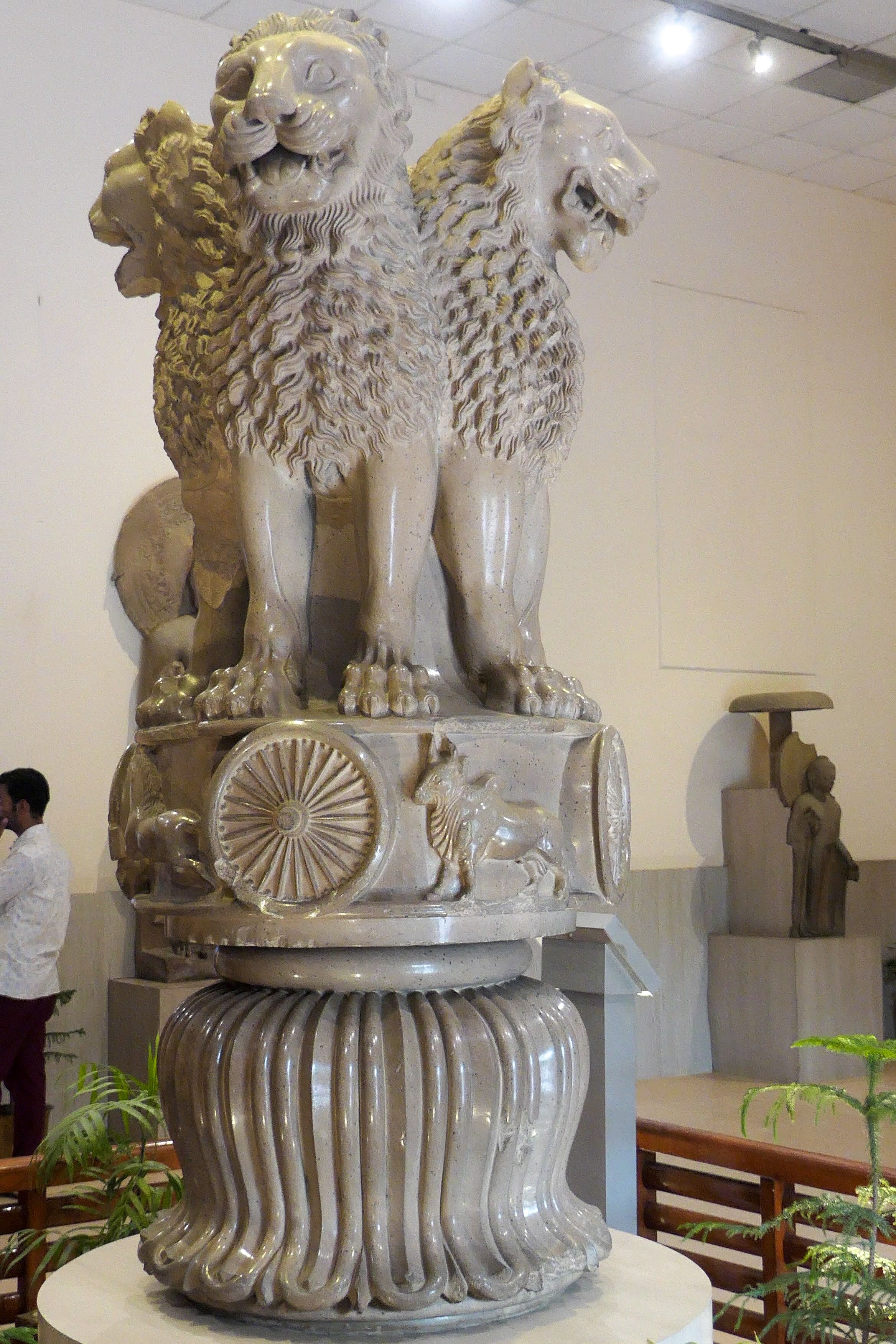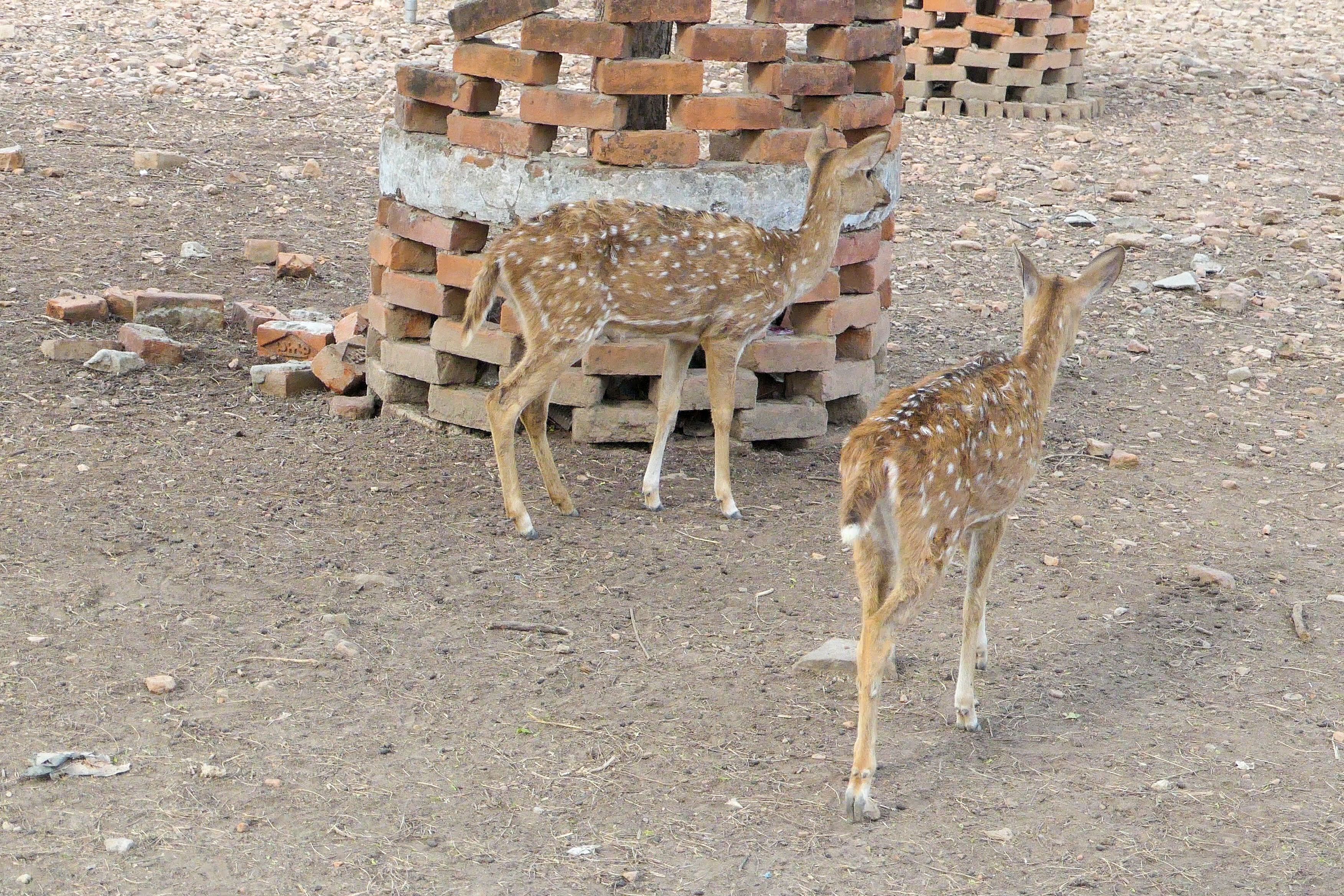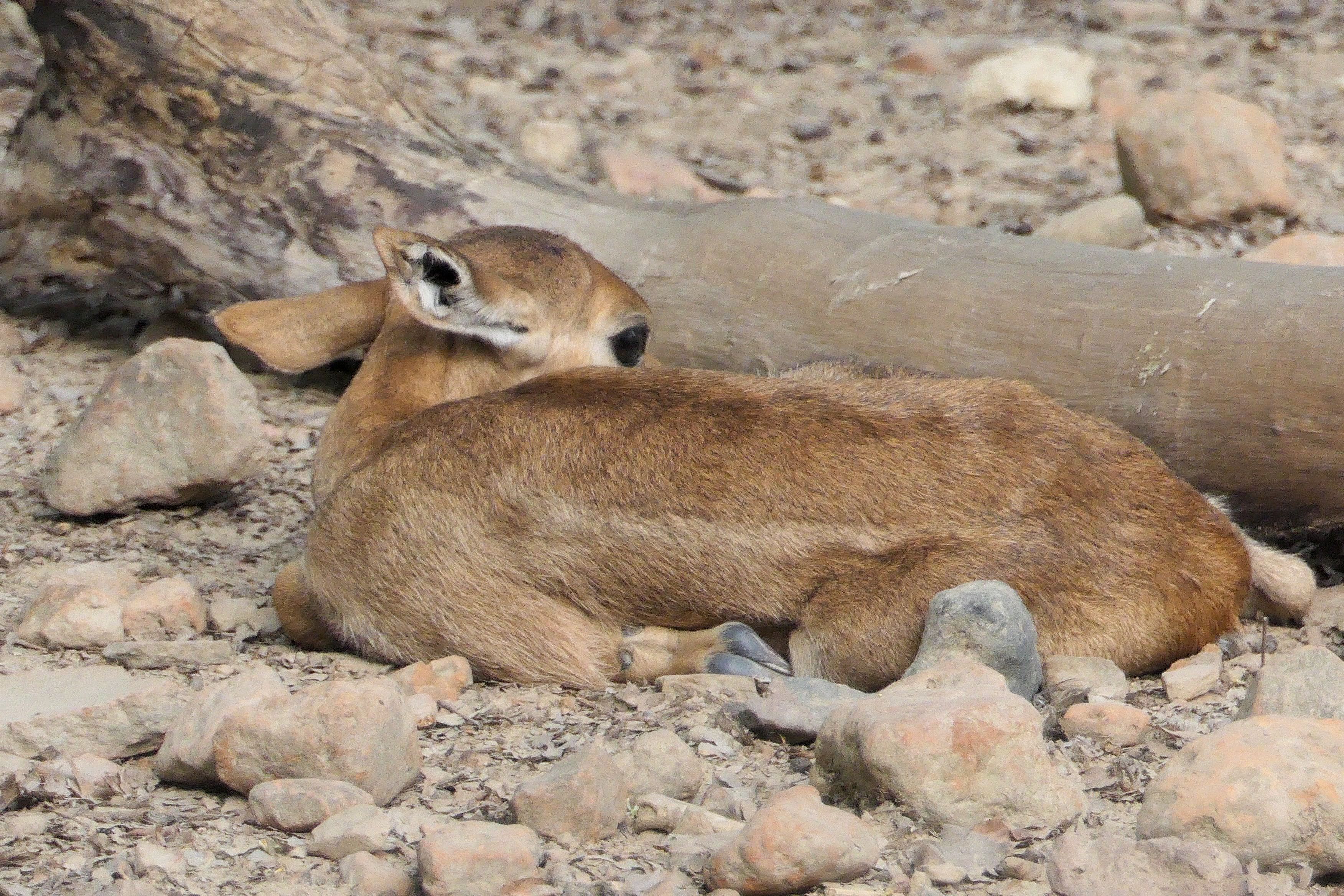Urgency & Dismay, Part II
Sunday, 9 April 2023
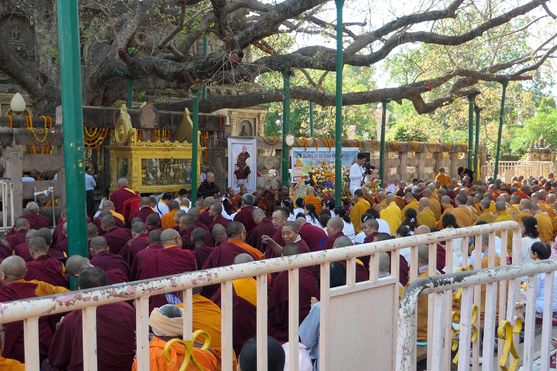
2. Bodhgaya
We arrived at Bodhgaya on Thursday evening; we woke up hungry on Friday morning, ready to travel to the Mahabodhi Temple Complex. But by the time we reached the hotel’s breakfast room, there was nothing left to eat — the breakfast buffet had been cleared out by a group of hungry Sri Lankan pilgrims who had arrived the previous night, woken up that morning at 4 AM, gone downstairs for breakfast, and then gone off to visit the temple complex themselves.
The Mahabodhi Temple Complex is another of the four places that merit being seen by a clansman with conviction: it marks the site where the Buddha was enlightened. The first temple there was built by King Ashoka in the third century BCE; the current temple dates from the fifth or sixth centuries CE. It’s a brick temple, not large, decorated with ornate carvings. Inside is a small chamber, large enough for a few dozen people. There’s an altar table, and an image of Buddha in a glass case. He’s making the bhūmisparśa mudra, his left hand in his lap palm upwards, his right hand touching the ground, calling on it to witness the insight he has gained. (Although it’s hard to see this, as the statue has been draped in golden cloth; we watched this happening when we were inside the temple.)
Outside the temple is an enclosure marked off by a stone fence. Inside that fence is a bodhi tree, with a complex history linking it to the original bodhi tree that the Buddha himself sat under. There is also a short walking path marked with stone lotuses, set there by King Ashoka to mark the Buddha’s footsteps.
The enclosure is part of a bigger precinct. Inside are stupas and trees and walkways. On one wall is a series of golden plates containing the text of the Aṣṭasāhasrikā Prajñāpāramitā Sūtra, and opposite them are a series of prayer wheels inscribed with Tibetan script. A gate leads out to a pool, with a statue of the Buddha meditating, protected from a thunderstorm by a giant cobra, the naga-king.
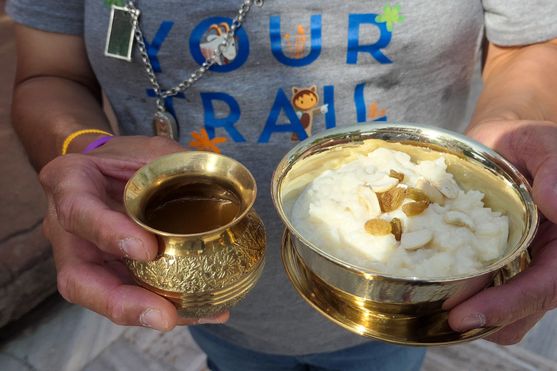
Calvin wanted to make an offering to the statue in the temple — a bowl of honey from his own hives and some kheer, a kind of rice pudding provided to the Buddha by a farmer’s wife called Sujātā, ending his six years of ascetic practice. He searched the markets of Patna for vessels appropriate for the occasion, ordered the kheer from the hotel, and filled and packed the vessels. When we arrived he quickly joined the queue to enter the temple to make his offering. Once the offering was complete, he searched the entire precinct, looking for stuff to photograph. He had lots to do.
Of all the Buddhist sites we’ve visited (and it’s been many more than just this main four), this one was the most alive. There were hundreds of people in the precinct — many of them monks and nuns, many tourists, locals, and groups of pilgrims in special outfits, arriving by bus, like our Sri Lankan friends. Rows of monks sat ouside the stone fence chanting. Others sat inside the fence, retracing the Buddha’s steps. Some visitors were carefully following a series of signs, directing them to contemplate the seven weeks the Buddha stayed here after his enlightenment and the seven different activities he performed.
But despite the business and the crowds and the activity, it was not impossible to take a few minutes to sit quietly and watch and think.
We came back again later in the evening. It was less crowded, and just as beautiful, but in a different way. Calvin had more photographs to take.
3. Sarnath
And when the Blessed One had set the Wheel of Dhamma in motion, the earth devas cried out: “Near Vārāṇasī, in the Deer Park at Isipatana, the Blessed One has set in motion the unexcelled Wheel of Dhamma that cannot be stopped by contemplative or brahman, deva, Māra, or Brahmā, or anyone at all in the cosmos.” The Dhammacakkappavattana Sutta (SN 56:11)
The Buddha travelled from Bodhgaya to a place near Varanasi called Deer Park, or Sarnath. That’s where he preached his first sermon, the sermon in which he first conveyed his insights to his five disciples. It’s an event called Setting the Wheel of Dharma in motion; it’s described in the Sutta quoted above.
We visited Sarnath yesterday. It’s an archaeological site: there are the usual brick remains of monasteries and temples and votive stupas all over the park. The most salient feature is another giant stupa, the Dharmek stupa, which over 40 metres high. Its base was built by King Ashoka, but built and rebuilt over the centuries to reach this height. It marks the place where the Buddha preached that first sermon.
It was Easter Saturday, so there were a lot of people there. But most of them were tourists or locals, and the site lacked the vibe of the Mahabodhi Temple Complex, the feeling a you get at a place that has been animated by millions of visiting worshippers over hundreds of years.
Still, it’s a beautiful site in its own way, and over the fence you can still see some deer — I would have been deeply disappointed if there had been no deer left. And there’s a small museum containing artefacts found during the excavation of the site, including the capital of an Ashokan pillar, beautifully preserved and polished, whose iconography has been adopted as a representation of India itself.
As we were leaving, our friends the Sri Lankan pilgrims arrived in their bus, after travelling more than eight hours to get here. By now, some of them were probably hungry.
That’s the end of our week-long tour of major Buddhist pilgrimage sites. This morning we went to the Ganges to watch a Hindu ceremony before taking a boat ride along the river and seeing how cremations are performed. Tonight, back to the Ganges for one last look.
But more of that later.
